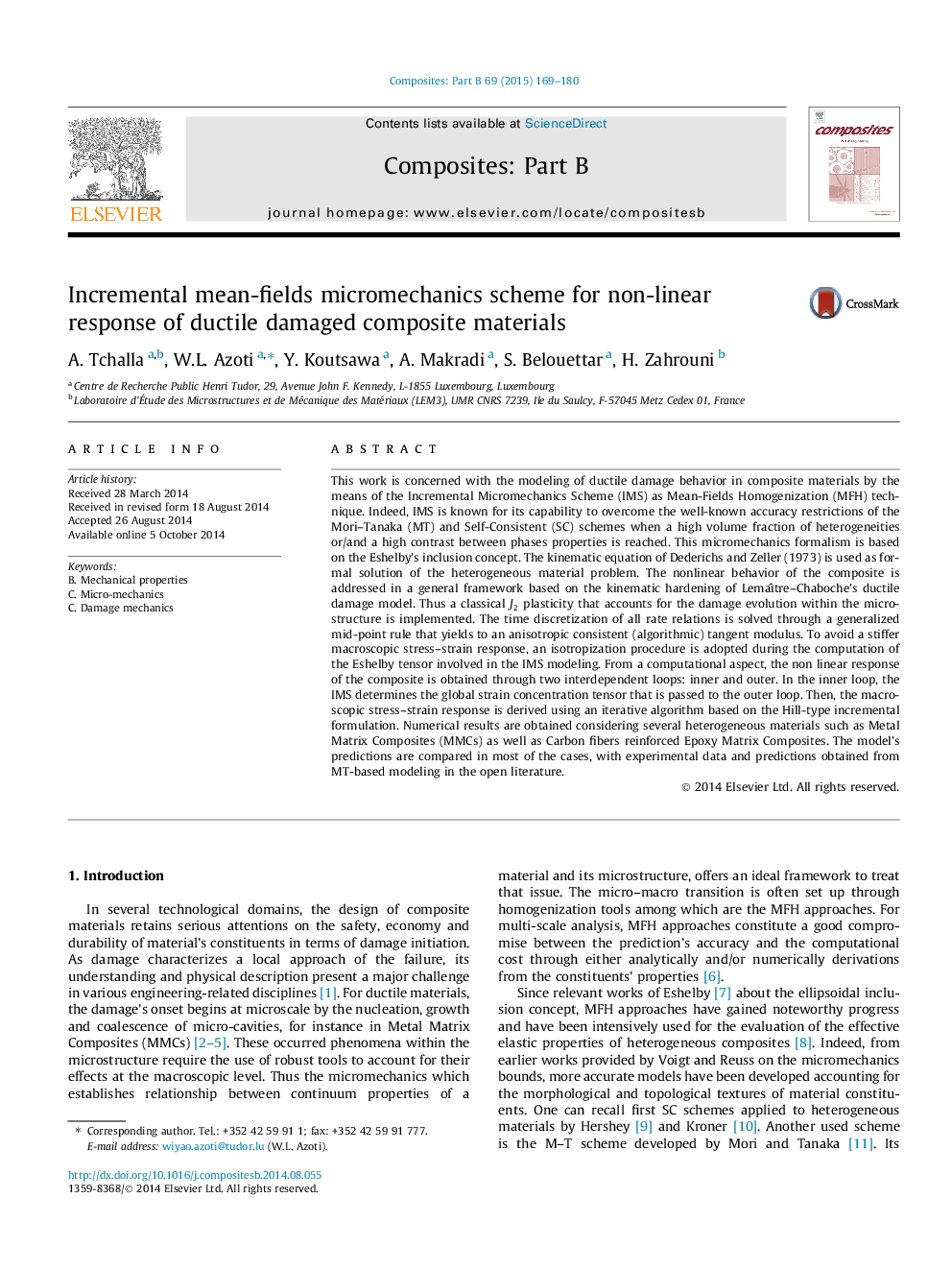| کد مقاله | کد نشریه | سال انتشار | مقاله انگلیسی | نسخه تمام متن |
|---|---|---|---|---|
| 817568 | 1469416 | 2015 | 12 صفحه PDF | دانلود رایگان |
• The Incremental Micromechanics Scheme is used based on the Eshelby inclusion concept.
• The ductile damage of Lemaıˆtre–Chaboche is coupled with the classical J2J2 flow rule.
• The non linear tangent operators are obtained through the consistent (algorithmic) moduli.
• An isotropization of the non-linear tangent modulus of the matrix is mandatory to avoid stiffer response.
• The stress–strain responses are compared with the open literature data.
This work is concerned with the modeling of ductile damage behavior in composite materials by the means of the Incremental Micromechanics Scheme (IMS) as Mean-Fields Homogenization (MFH) technique. Indeed, IMS is known for its capability to overcome the well-known accuracy restrictions of the Mori–Tanaka (MT) and Self-Consistent (SC) schemes when a high volume fraction of heterogeneities or/and a high contrast between phases properties is reached. This micromechanics formalism is based on the Eshelby’s inclusion concept. The kinematic equation of Dederichs and Zeller (1973) is used as formal solution of the heterogeneous material problem. The nonlinear behavior of the composite is addressed in a general framework based on the kinematic hardening of Lemaıˆtre–Chaboche’s ductile damage model. Thus a classical J2J2 plasticity that accounts for the damage evolution within the microstructure is implemented. The time discretization of all rate relations is solved through a generalized mid-point rule that yields to an anisotropic consistent (algorithmic) tangent modulus. To avoid a stiffer macroscopic stress–strain response, an isotropization procedure is adopted during the computation of the Eshelby tensor involved in the IMS modeling. From a computational aspect, the non linear response of the composite is obtained through two interdependent loops: inner and outer. In the inner loop, the IMS determines the global strain concentration tensor that is passed to the outer loop. Then, the macroscopic stress–strain response is derived using an iterative algorithm based on the Hill-type incremental formulation. Numerical results are obtained considering several heterogeneous materials such as Metal Matrix Composites (MMCs) as well as Carbon fibers reinforced Epoxy Matrix Composites. The model’s predictions are compared in most of the cases, with experimental data and predictions obtained from MT-based modeling in the open literature.
Journal: Composites Part B: Engineering - Volume 69, February 2015, Pages 169–180
